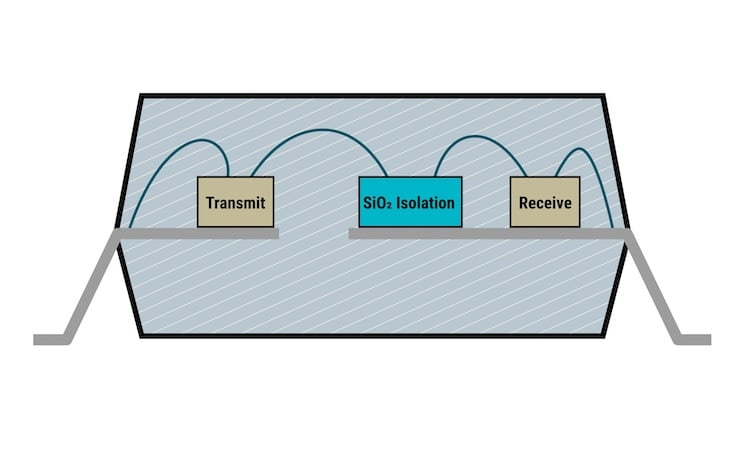Unveiling Opto-Emulators: A Deep Dive into Alternatives to Traditional Optocouplers
Presented by EEPower in collaboration with Bodo’s Power Systems, this exclusive digital content partnership brings light to the subject.
Dubbed in the industry as photocouplers, opto-isolators, or optical isolators, optocouplers have held a prominent place since the 1970s for ensuring safety isolation in sectors such as industrial and automotive systems. Despite strides in their development, they face limitations in electrical performance, voltage endurance, and integration potential, leading experts to look for new avenues.
Capacitive and magnetic isolation stand out as contemporary rivals, outshining optocouplers with superior performance metrics. Pioneering since the early 2000s, Texas Instruments (TI) has been making headway with their silicon dioxide (SiO2)-derived digital isolation technology, crafting isolators that not only mirror but surpass the functionality of traditional optocouplers.
Introducing the Opto-Emulator
Embarking on a new frontier, Texas Instruments' opto-emulators blend the resilience of classical optocouplers with the cutting-edge SiO2-based isolation approach. They are engineered to be pin-to-pin compatible with widespread optocoupler models, paving the way for effortless adoption in pre-existing designs and offering similar signal dynamics. To the discerning eyes of a design engineer, these opto-emulators present themselves akin to their traditional counterparts but are built upon TI’s advanced SiO2 insulation technology.
This innovation presents an insurmountable barrier against high-voltage signals, curbing ground loop concerns, and upholding system integrity. The merits of SiO2 isolation extend to better electrical properties, bolstered voltage reliability, and the latitude to amalgamate more system features. This semiconductor innovation aims to merge the tried-and-true efficacy of optocouplers with the modern benefits of TI’s technological enhancements, effectively delivering an optimum hybrid solution.

Image used courtesy of Bodo’s Power Systems
Conventional optocouplers function by using an LED to send digital or analog signals across a barrier designed to provide isolation, with the signal then being picked up by a phototransistor on the opposing side, illustrated in Figure 1. A well-documented issue with these devices is the inevitable deterioration of the LED component over its lifespan, which presents a persistent challenge and ranks as the primary concern among system designers. Furthermore, the variety of materials employed for insulation in optocouplers spans from simple air gaps to more complex substances such as epoxies or molding compounds. Table 1 contrasts the disparity in insulation robustness between a standard optocoupler and an opto-emulator that incorporates a SiO2-based dielectric for isolation.

Figure 1. Typical optocoupler construction.
Table 1. The dielectric strength of various insulating materials
| Insulator Materials | Technology | Dielectric Strength |
| Air | Optocouplers | ~1 VRMS/µm |
| Epoxies | Optocouplers | ~20 VRMS/µm |
| Silica Filled Mold Compounds | Optocouplers | ~100 VRMS/µm |
| SiO2 | Opto-emulators | ~500 VRMS/µm |
Opto-emulators, adopting a silicon dioxide (SiO2) layer for signal isolation, present a solution that circumvents the familiar shortcomings encountered with traditional optocouplers. As depicted in Figure 2, the design of a TI opto-emulator replicates the operational characteristics of a classic optocoupler in its transmission and reception circuits, while utilizing SiO2 to establish a robust high-voltage isolation barrier.

Figure 2. Construction of a TI digital isolator. Image used courtesy of Bodo’s Power Systems [PDF]
Benefits of Utilizing Opto-Emulators with Advanced Isolation
Incorporating cutting-edge isolation techniques, opto-emulators are designed to surpass the conventional limitations of optocouplers, delivering superior efficiency and dependability. Below are several benefits that opto-emulators offer:
Reduced Energy Demands
Optocoupler designs traditionally demand overengineering to account for LED degradation, necessitating extra forward current (IF) over the product's lifespan. In contrast, TI opto-emulators dramatically cut power consumption—by up to 80%—thanks to significantly lower IF and supply current requirements.
Enhanced Immunity to Erratic Voltages
Typical digital optocouplers offer around 15 kV/µs of common-mode transient immunity (CMTI), whereas the ISOM8710 boasts a minimum CMTI of 125 kV/µs. This impressive immunity is optimal for use in environments with severe common-mode switching or high-frequency noise.
Consistent and Precise Current Transfer
The burden of overpaying for narrow current transfer ratio (CTR) ranges is a thing of the past. TI opto-emulators, including the ISOM8110, feature a selection of stable, precise CTR ranges as a default, maintaining consistency across temperatures.
Accelerated Data Transmission
While standard high-speed optocouplers accommodate data speeds ranging from 1 to 10 Mbps, the ISOM8710 pushes the boundary with capabilities of up to 25 Mbps—paving the way for higher data throughput and suitability for high-speed operations.
Expanded Bandwidth
The ISOM8110 offers an extensive bandwidth of 680 kHz, facilitating smaller-sized essential magnetic components and enhancing transient responses in flyback converter designs. This leads to a reduction in necessary output capacitors, conserving circuit board space and cutting overall system cost, particularly in high-frequency gallium nitride setups.
Broad Operating Temperature Spectrum
Most optocouplers are confined to a temperature span of 0°C to +85°C, and wider ranges usually incur additional costs. However, TI opto-emulators comfortably operate over a vast range—from –55°C to +125°C—without extra charge, and more automotive-grade selections are anticipated in 2024.
Assured Isolation Reliability
Opto-emulators excel in high-voltage applications that call for dependable insulation. TI's opto-emulators rely on SiO2 as an insulation barrier, offering 500 V/µm of isolation strength—a discernible improvement over the 1 V/µm provided by the air used in numerous optocouplers.
Opto-Emulator Summation
Opto-emulators are a transformative development in isolation technology, blending the familiar operational mode of optocouplers with the robustness of SiO2-based isolation. These innovative devices enable today's systems to achieve refined performance, reliability, and safety. By adopting opto-emulators, designers can refine their systems and capitalize on the latest in isolation advances.







